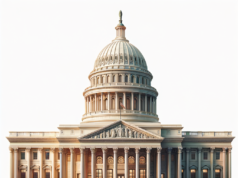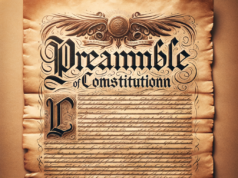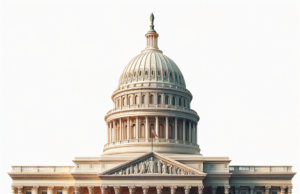Contents
- 1 Understanding the Current Landscape of Gun Violence in America: A Statistical Overview
- 2 Analyzing the Root Causes Behind the Recent Increase in Gun Violence Incidents
- 3 The Role of Legislation: How Gun Control Laws Impact Violence Rates in the U.S.
- 4 Community Responses: Grassroots Efforts to Combat Gun Violence and Promote Safety
- 5 The Psychological Impact of Gun Violence on Victims and Communities Nationwide
- 6 Future Directions: Strategies for Reducing Gun Violence and Enhancing Public Safety
In recent years, the United States has witnessed a troubling surge in gun violence incidents, prompting urgent discussions among policymakers, community leaders, and citizens alike. This alarming trend has not only raised concerns about public safety but has also highlighted the complex interplay of factors contributing to this crisis. As America grapples with the implications of rising gun violence, it is essential to explore the current landscape, analyze root causes, assess the impact of legislation, and consider community responses. This article aims to provide a comprehensive overview of the multifaceted issue of gun violence in America and propose strategies for fostering a safer society.
Understanding the Current Landscape of Gun Violence in America: A Statistical Overview
The landscape of gun violence in America has become increasingly dire, with statistics revealing a stark reality. According to the Gun Violence Archive, there were over 44,000 gun-related deaths in 2022, a significant increase from previous years. This figure includes homicides, suicides, and accidental discharges, underscoring the pervasive nature of gun violence across various contexts. Additionally, the number of mass shootings has surged, with 647 incidents reported in 2022 alone, leading to widespread fear and anxiety within communities. The data indicates that urban areas are disproportionately affected, yet rural regions are not immune, highlighting the national scope of this crisis. As these statistics paint a grim picture, they also serve as a call to action for stakeholders at all levels to address the underlying issues contributing to this epidemic.
Analyzing the Root Causes Behind the Recent Increase in Gun Violence Incidents
To effectively combat the surge in gun violence, it is crucial to understand its root causes. Experts point to a combination of factors, including socioeconomic disparities, mental health issues, and the proliferation of firearms as significant contributors. Economic instability, particularly in marginalized communities, often leads to increased crime rates, including gun violence. Furthermore, the COVID-19 pandemic exacerbated existing mental health challenges, leading to heightened tensions and, in some cases, violent outbursts. The accessibility of firearms, fueled by lax regulations and a thriving gun culture, has also played a pivotal role in facilitating violence. As these factors intertwine, they create a complex web that demands a multifaceted approach to prevention and intervention.
The Role of Legislation: How Gun Control Laws Impact Violence Rates in the U.S.
Legislation surrounding gun control remains a contentious issue in the United States, with advocates on both sides presenting compelling arguments. Research indicates that states with stricter gun control laws tend to experience lower rates of gun violence. For instance, states that have implemented universal background checks and waiting periods for firearm purchases have seen significant declines in gun-related deaths. Conversely, states with more permissive laws often report higher incidents of gun violence. The challenge lies in balancing the rights of individuals to bear arms with the need for public safety. Legislative efforts, such as the recent Bipartisan Safer Communities Act, aim to address this balance by promoting responsible gun ownership while implementing measures to prevent firearms from falling into the wrong hands. However, the effectiveness of such laws continues to be a subject of debate, necessitating ongoing evaluation and adaptation.
Community Responses: Grassroots Efforts to Combat Gun Violence and Promote Safety
In response to the escalating gun violence crisis, numerous grassroots organizations have emerged, mobilizing communities to take action. These initiatives often focus on prevention, education, and intervention, aiming to create safer environments for residents. Programs such as violence interruption, which employs trained mediators to de-escalate conflicts before they result in violence, have shown promise in reducing incidents. Additionally, community engagement efforts, including workshops and outreach programs, seek to educate individuals about the risks associated with firearms and promote responsible ownership. By fostering collaboration among community members, local leaders, and law enforcement, these grassroots efforts aim to build trust and create a united front against gun violence, ultimately contributing to a culture of safety and resilience.
The Psychological Impact of Gun Violence on Victims and Communities Nationwide
The psychological ramifications of gun violence extend far beyond the immediate victims, affecting entire communities and shaping collective trauma. Survivors of gun violence often grapple with post-traumatic stress disorder (PTSD), anxiety, and depression, which can hinder their ability to reintegrate into society. Communities plagued by gun violence may experience a pervasive sense of fear, leading to social withdrawal and diminished quality of life. Children growing up in these environments are particularly vulnerable, as exposure to violence can disrupt their development and lead to long-term psychological effects. Addressing the mental health needs of both victims and communities is essential for fostering healing and resilience. Comprehensive support services, including counseling and trauma-informed care, are critical components in mitigating the psychological impact of gun violence and promoting recovery.
Future Directions: Strategies for Reducing Gun Violence and Enhancing Public Safety
As the nation confronts the pressing issue of gun violence, a multi-pronged approach is essential for effective intervention. Strategies should encompass legislative reform aimed at closing loopholes in gun control laws, enhancing background checks, and promoting safe storage practices. Additionally, investment in community-based programs that address the root causes of violence, such as poverty and lack of access to mental health services, is crucial. Public awareness campaigns can also play a vital role in educating citizens about the risks associated with firearms and the importance of responsible ownership. Collaborative efforts among government agencies, law enforcement, and community organizations will be key in developing comprehensive solutions that prioritize public safety while respecting individual rights. By adopting a holistic approach, America can work towards reducing gun violence and fostering a culture of safety and security for all its citizens.
The surge in gun violence incidents in America presents a complex and urgent challenge that requires a concerted effort from all sectors of society. By understanding the current landscape, analyzing root causes, assessing the impact of legislation, and fostering community responses, stakeholders can develop effective strategies to combat this crisis. The psychological impact of gun violence on victims and communities underscores the need for comprehensive support systems and trauma-informed care. As the nation moves forward, it is imperative to prioritize public safety while respecting individual rights, ultimately striving for a future where gun violence is no longer a pervasive threat to American society.

























